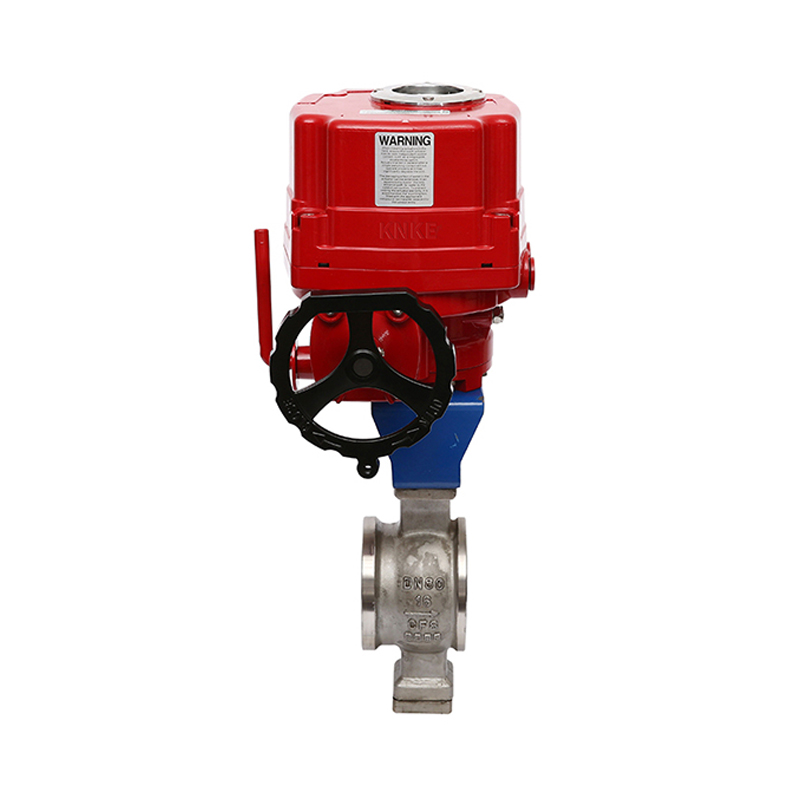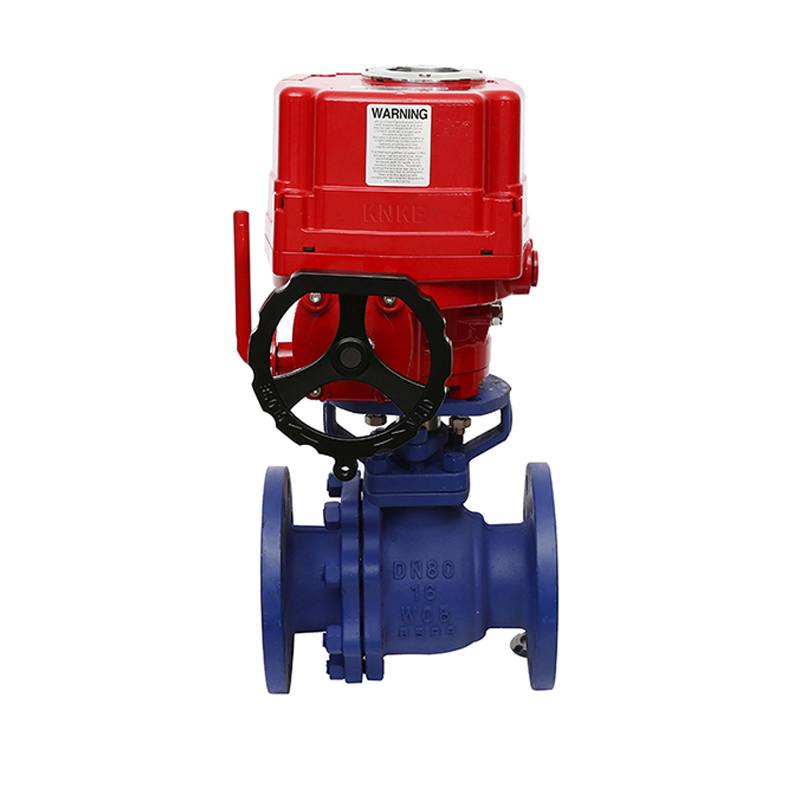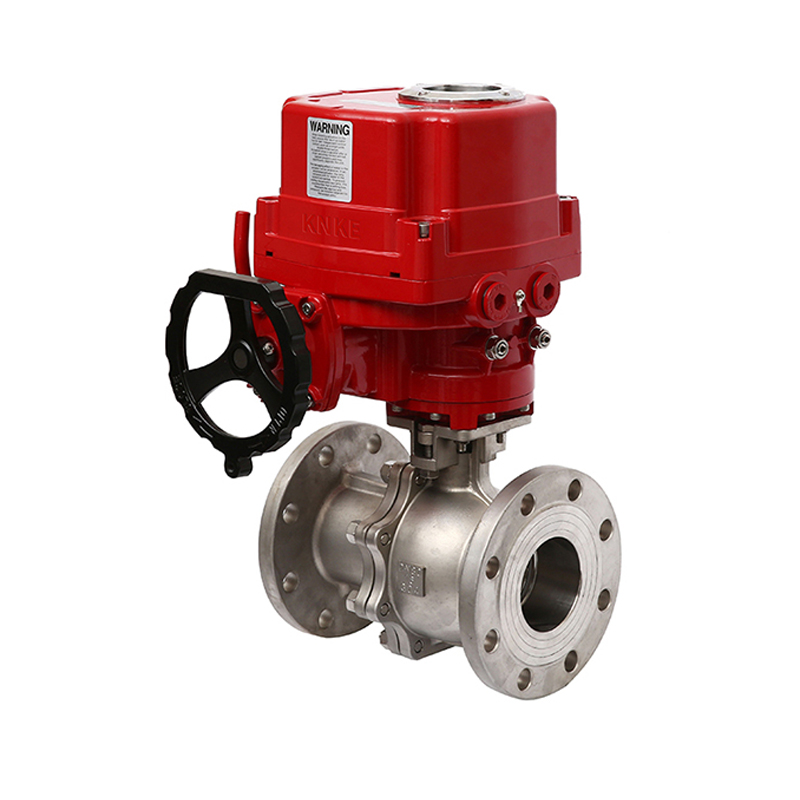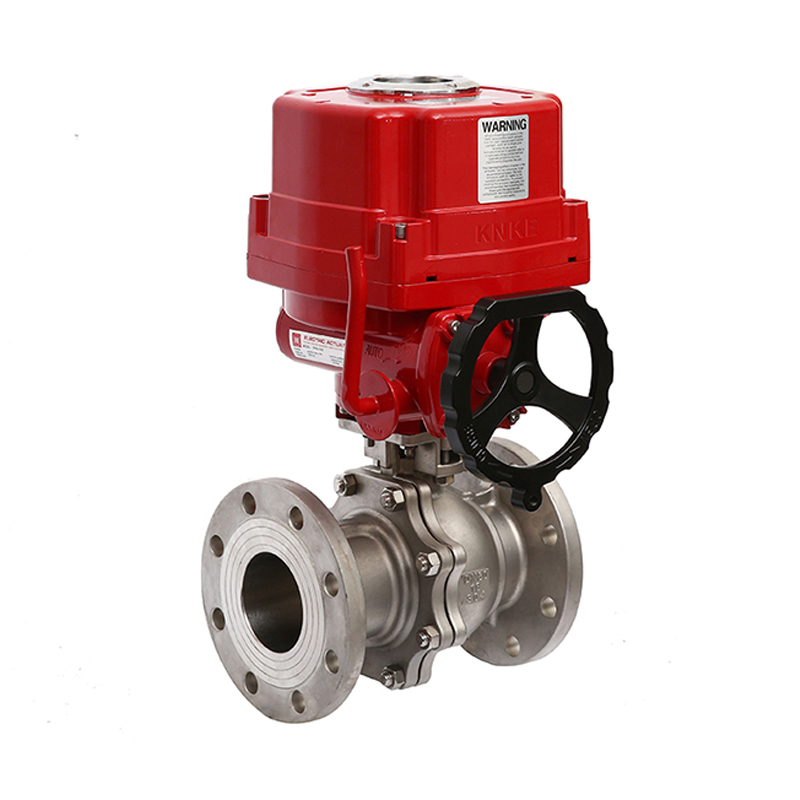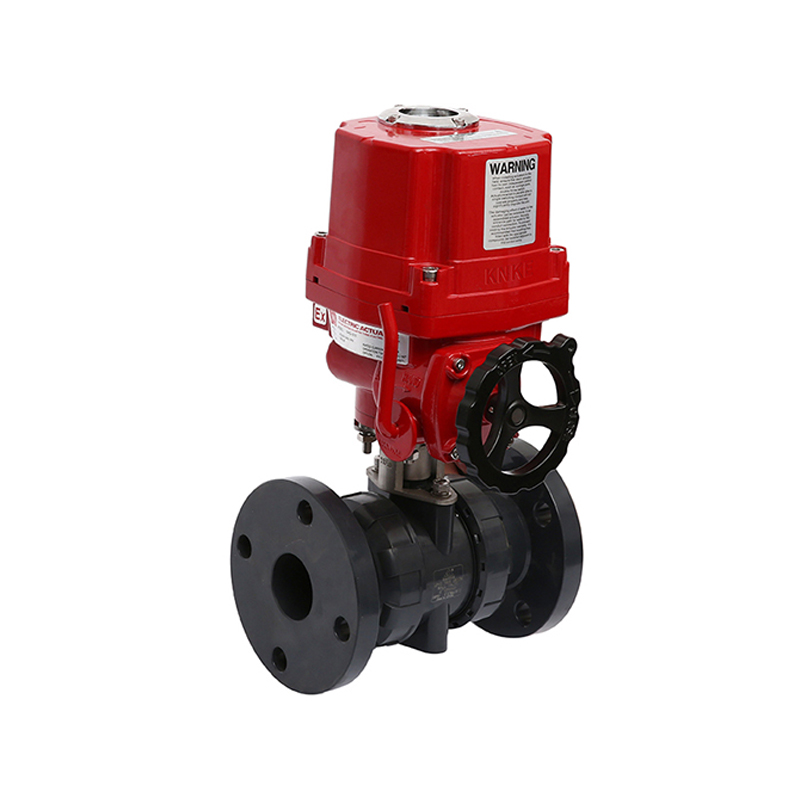Description
The KNKE electric ball valve is a high-efficiency industrial control valve. It is widely used in fields like oil and gas, petrochemical, metallurgy, paper production, and power generation. This valve consists of an electric actuator and a ball valve, allowing for precise fluid control and regulation. Its built-in servo system eliminates the need for an additional servo amplifier, making it easy to operate. By simply inputting a 4-20mA signal and 220V AC power, you can remotely control the valve’s on/off position. Its design is ideal for handling media containing fibers or small solid particles, ensuring a smooth flow.
Key Features of KNKE Electric Ball Valve
- Low Fluid Resistance: The KNKE electric ball valve has very low fluid resistance compared to other valve types. Even in reduced bore designs, the fluid resistance is minimal. This feature helps to reduce energy loss in the system.
- Reliable Sealing Performance: The valve stem only rotates and does not lift, which ensures the sealing materials like PTFE work effectively. As media pressure increases, sealing performance improves as well.
- Durable and Low Friction: The sealing material has self-lubricating properties. This minimizes friction loss between the valve stem and ball, greatly extending the valve’s lifespan.
- Easy Operation: Built-in thrust bearings reduce the friction torque of the valve stem. This helps to keep the valve balanced and easy to operate, even with long-term use.
- Safety Design: The blow-out proof stem design and the convex step structure ensure reliable sealing in case of emergencies. This feature significantly improves overall safety.
KNKE Electric Ball Valve Selection Parameters
| Parameter | Description |
| Nominal Diameter | DN15 to DN300 |
| Nominal Pressure | 1.6Mpa to 6.4Mpa |
| Structure Type | Spherical |
| Connection Type | Flange, Wafer, Threaded, Welded |
| Applicable Temperature | ≤350ºC |
| Drive Type | Electric (Optional manual override) |
| Body Material | Cast Steel, Stainless Steel |
| Manufacturing Standard | GB (China), DIN (Germany), API/ANSI (USA) |
| Applicable Media | Water, Oil, Gas, Liquid |
| Brand | KNKE |
Application Scenarios for KNKE Electric Ball Valve
The KNKE electric ball valve is essential in various industrial systems. It provides reliable control in a wide range of settings:
- Oil and Gas Industry
The electric ball valve is widely used in oil and gas fluid transmission systems. It ensures controlled opening, closing, and flow regulation of the media. With excellent sealing capabilities, it can handle harsh conditions effectively, maintaining safety and efficiency. - Wastewater Treatment Systems
This valve is perfect for wastewater treatment systems. It handles media with fibrous impurities and particles, ensuring smooth discharge. The corrosion-resistant valve seat material is suitable for long-term operation in humid and corrosive environments. - Food and Pharmaceutical Industries
In food and pharmaceutical processing, the electric ball valve helps maintain cleanliness and safety. Its sealing materials are non-toxic and resistant to high temperatures, which meets stringent hygiene standards. It also provides precise control for steam, liquids, and gases. - Building Automation Systems
KNKE electric ball valves are ideal for HVAC systems in modern buildings. They control the flow of hot or cold water and air conditioning systems. This enhances energy efficiency and comfort while enabling smart management. - Chemical and Metallurgy Industries
In chemical and metallurgy industries, the electric ball valve controls corrosive media effectively. It is used in pipelines for transporting chemicals and gases, especially in applications that require frequent opening, closing, and flow regulation.
Major Technical Specifications of KNKE Electric Ball Valve
| Technical Parameter | Details |
| Rated Flow Coefficient KV | 21 to 3589 |
| Allowable Differential Pressure (MPa) | ≤ Nominal Pressure |
| Valve Body Form | Two-piece cast ball valve |
| Connection Type | Flange, Welded, Threaded |
| Sealing Material | V-shaped PTFE packing, flexible graphite |
| Flow Characteristic | Fast open type (approximate) |
| Operation Range | 0° to 90° |
| Leakage (Q) | Less than 0.01% of rated KV (GB/T4213-92) |
| Basic Error | ±1% |
| Hysteresis | ±1% |
| Dead Zone | ≤1% (adjustable) |
| Rangeability | 250:1, 350:1 |
Design Advantages of KNKE Electric Ball Valve
- Anti-Misoperation Design: The valve has a locking mechanism at fully open or closed positions. This feature prevents unauthorized operation.
- Stem Anti-Disengagement Design: A stepped structure at the lower part of the stem prevents ejection caused by abnormal internal pressure.
- Fireproof Sealing Design: Fire-resistant sealing rings are installed between the ball and the seat. Even if the seat gets damaged, the sealing performance remains effective.
- Flexible Control and Safety: The electric ball valve is quick to open or close. It operates smoothly, has a long service life, and supports remote centralized control, meeting modern automation needs.
How to Choose the Right KNKE Electric Ball Valve
Choosing the right electric ball valve is crucial for system stability and longevity. Consider the following:
- Nominal Diameter and Pressure: Choose the nominal diameter and pressure based on the size of your pipeline and media pressure range.
- Applicable Media: Ensure that the valve body and sealing materials are compatible with the media. For example, stainless steel is best for corrosive substances.
- Drive Type: Depending on the level of automation, select a ball valve with an electric actuator or a manual operation device.
- Environmental Temperature: For high or low temperatures, or other special conditions, choose appropriate sealing materials and protection levels.

